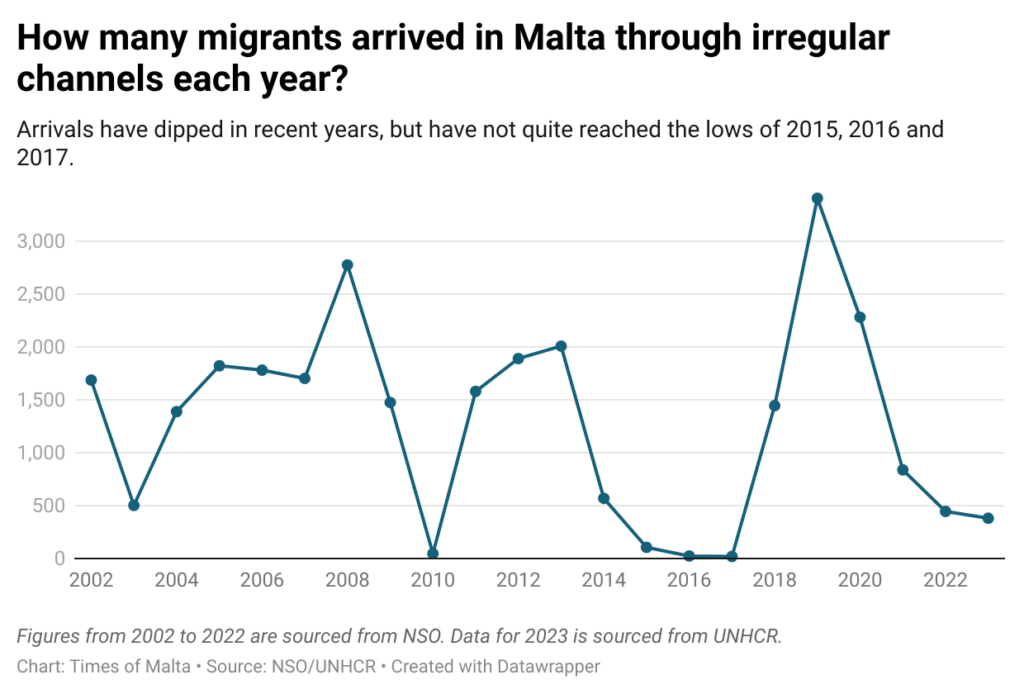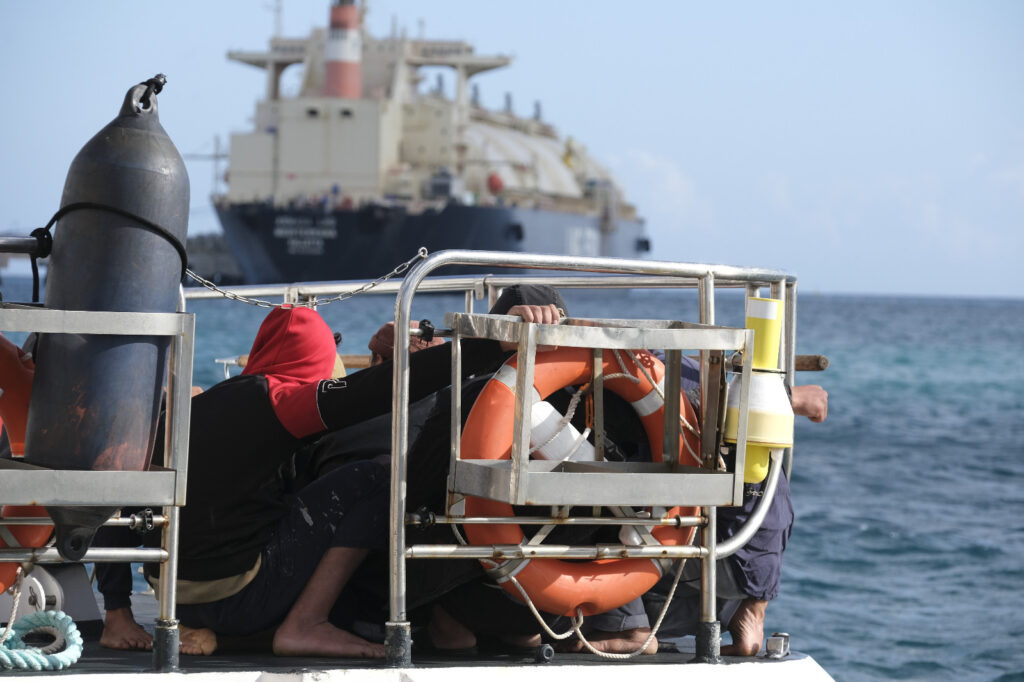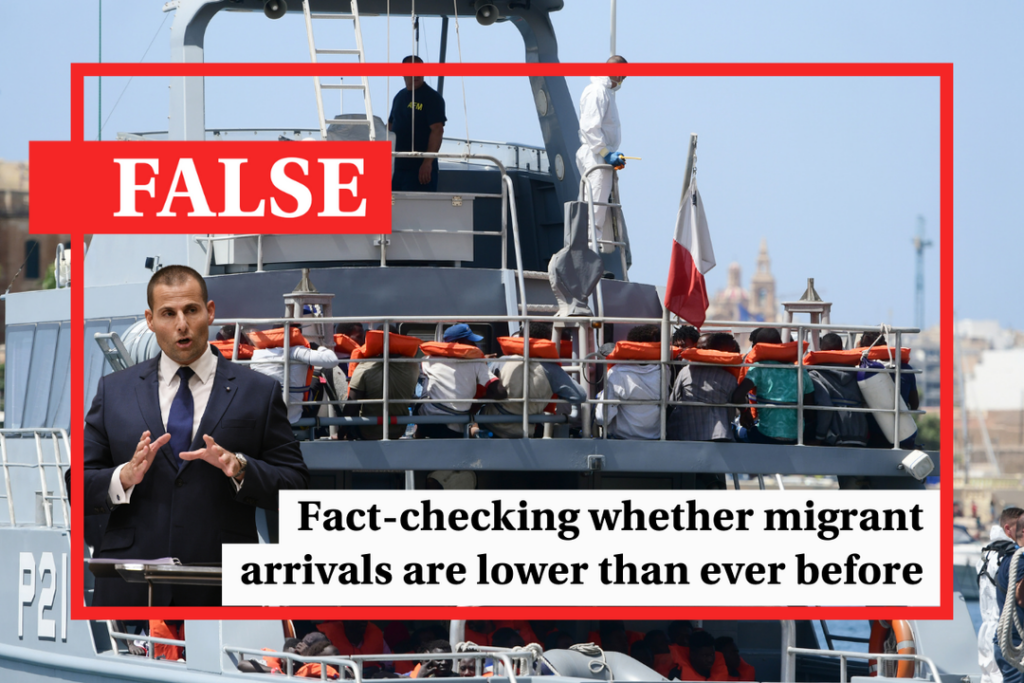Prime Minister Robert Abela on Friday 23 February claimed that fewer migrants are arriving at Malta’s shore than ever before, saying that this shows how Malta is performing well in the “battle” against irregular immigration.
Abela was replying to media questions about the deportation of Kusi Dismark, a Ghanaian national who was denied asylum and deported last week, after having lived in Malta for over a decade.
“The number of arrivals to our country over the past months is, historically, the lowest that we’ve ever had,” Abela said.
He added that it’s no coincidence that Malta has “a consistent trend of the fewest arrivals we’ve ever had in our country”, saying that policy decisions had prevented Malta from being overwhelmed by migrant arrivals after instability in northern Africa drove thousands of people to leave the continent from Libya and Tunisia’s shores.
Abela was speaking hours before a boat carrying an estimated 34 people capsized three and a half miles off Malta’s shores, killing five people and injuring several others.
How many people arrive in Malta each year?
First of all, we should clarify who Abela was referring to.
In this particular interview, Abela is talking about the arrival of asylum seekers, that is persons who travel to Malta through irregular channels to apply for asylum, in the hope of being recognised as a refugee or given subsidiary protection.
He was not referring to migrants who travel to Malta through regular channels, such as Europeans who settle in Malta using their EU passports or third-country nationals who are imported to join Malta’s labour force.
Asylum seekers typically arrive by sea, braving the Mediterranean currents in boats that are often unfit for purpose, sometimes with tragic consequences.
UNHCR data shows that some 380 people arrived in Malta by sea throughout 2023, all of them having departed from either Libya or Tunisia.
This is slightly less than the previous year, when 444 people arrived and fewer than half the 832 people who travelled to Malta in 2021.
It is also significantly fewer than 2018, 2019 and 2020, when thousands of asylum seekers travelled to Malta, peaking at over 3,400 in 2019.
However, it is not true that today’s arrivals are the fewest that Malta has ever seen, with today’s arrivals still outnumbering those throughout 2015, 2016 and 2017.
NSO data shows a similar pattern.
Although NSO has not yet published its figures for 2023, its numbers for all other years are virtually identical to those listed by UNHCR.
According to NSO, 445 irregular immigrants arrived in Malta in 2022, including people who were airlifted to rescue when found at sea.
While this is lower than most years across the previous decade, fewer arrivals were recorded in each of 2015, 2016 and 2017.

What if we just look at the past few months?
Abela’s claim would be incorrect even if we were to assume that he is just referring to the past couple of months, rather than the last full year.
UNHCR data shows that while relatively few migrants travelled to Malta irregularly throughout the late autumn and early winter, other years recorded even fewer arrivals during the same period.
A total of 65 people arrived in Malta throughout the past three months, namely November 2023 until January 2024. This is fewer than most other years, but is still eclipsed by the winter of 2020 and early 2021, when only 25 asylum seekers arrived.
Other winters are likely to have seen even fewer arrivals. In 2016 and 2017, a total of 24 and 25 people respectively arrived throughout the entire year, while the entirety of 2010 also saw just 47 arrivals.

Fewer people living in open centres
While the number of arrivals is not quite the lowest it has ever been, the number of people living in the open centres does appear to be dipping.
According to UNHCR, some 207 people were living in one of the government’s open centres as of the end of 2023, with a further 15 in the Ħal Far Hangar Centre.
This has been on a downward trend for several years, rapidly shrinking from a high of 1,745 in 2020.
Verdict
While the number of migrants arriving in Malta through irregular channels appears to be on a downward trend, there are several other years during which fewer arrivals were recorded, according to data from both NSO and UNHCR.
380 people arrived in Malta throughout 2023, more than the total in 2010, 2015, 2016 and 2017.
Even taking just the past three months into account reveals that there are years in which fewer arrivals were recorded during the same period.
This claim is therefore false, as the evidence clearly refutes the claim.
The Times of Malta fact-checking service forms part of the Mediterranean Digital Media Observatory (MedDMO) and the European Digital Media Observatory (EDMO), an independent observatory with hubs across all 27 EU member states that is funded by the EU’s Digital Europe programme. Fact-checks are based on our code of principles.
Let us know what you would like us to fact-check, understand our ratings system or see our answers to Frequently Asked Questions about the service.





